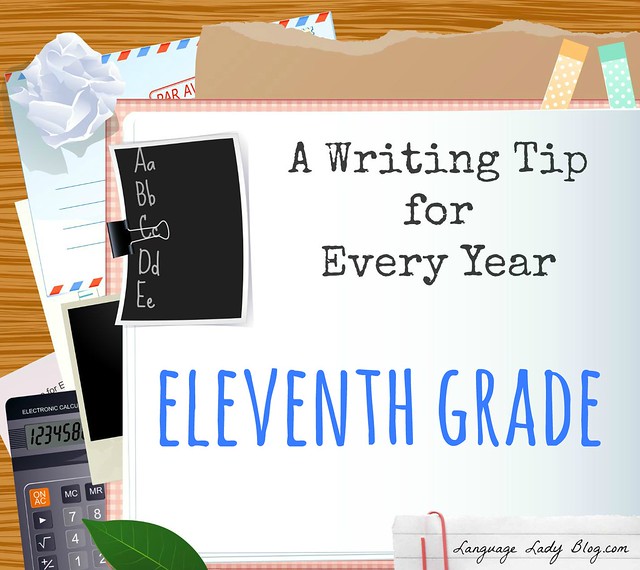Eleventh Grade: Guide your student in editing his papers.
I always advise homeschooling moms to use grading time wisely in all subjects. For example, in math, rather than grading your student’s math separately and giving him back a paper with a score on it, grade it with your student right by your side—and point out errors and use grading time as teaching time. (This will be some of the most valuable teaching time that you can ever find! What better way to learn than from our mistakes immediately.)
Some suggestions for editing with your student (for parents and teachers and homeschoolers) include
(1) Have your student read his paper aloud and both of you “listen” for errors.
(2) When helping him learn where to put in commas, especially if the missing comma can be heard with voice inflection, read the sentence in question aloud to your student, emphasizing where the comma goes, and have him tell you where he “hears” it should be.
(3) If the errors you are finding are paragraph break mistakes, read the portion to him that you believe should be one paragraph and ask him what that paragraph is about. Write that “topic” along the side of that portion. Read the next portion and ask him what that part is about. Continue doing this, drawing lines where a paragraph break should be (based on your and his discussion and dissecting of the text).
(4) If the error is that of subject-verb agreement, find the incorrect sentence and ask him what the subject of the sentence is. Then ask him what the verb is. Ask him if they agree. (Again, read them aloud {without the intervening material that might be stumping him} so that he can “hear” the error.)
(5) If he has not learned to find errors very well, consider using an editing program (like the book Editor in Chief) so that he can hone his editing skills in a manner that is “checkable” with the answer key. These skills really do carry over to a student’s own writing!
(6) If your student is fairly good at finding errors, but you still find many more than he does, make a note in the margin of each line or so that says the number of errors that are in that sentence. Let him look for errors one line at a time with your oversight.
(7) Finally, do not underestimate a student’s ability to learn from your edits on his paper. If you mark his errors then review them with him (“A comma should go before the ‘and’ because you have a complete sentence on the left and a complete sentence on the right”), he will gain great editing skills.
Note: Check out the Editor Duty assignments that are in each weekly Character Quality Language Arts sample for some editing passages (with the Answer Keys) for your student to practice with. There are also editing passages in the back of Meaningful Composition 11 I: Timed Essays and The Three P’s of Persuasion




